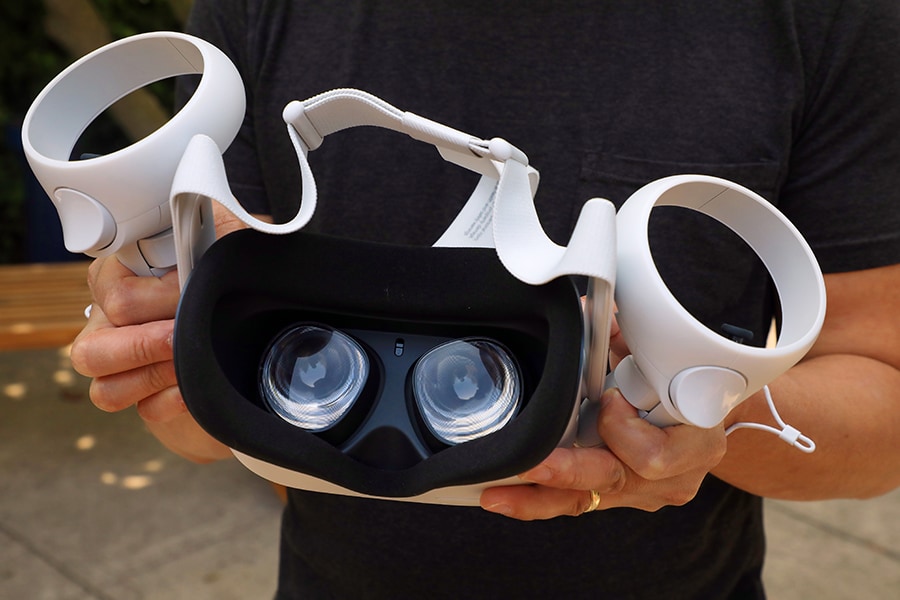
Can Facebook make virtual reality happen for real this time?
Though tech giants like Facebook and Sony have spent billions of dollars trying to perfect the experience, virtual reality has stayed a niche plaything of hobbyists willing to pay thousands of dollars, often for a clunky VR headset tethered to a powerful gaming computer
 Facebook’s Oculus Quest 2 virtual reality headset in Oakland, Ca., on Sept. 14, 2020. The Quest 2’s headset and controllers include motion sensors to follow your head and hand movements.
Facebook’s Oculus Quest 2 virtual reality headset in Oakland, Ca., on Sept. 14, 2020. The Quest 2’s headset and controllers include motion sensors to follow your head and hand movements.
Image: Jim Wilson/The New York Times
SAN FRANCISCO — For years, the idea that virtual reality would go mainstream has remained exactly that: virtual.
Though tech giants like Facebook and Sony have spent billions of dollars trying to perfect the experience, virtual reality has stayed a niche plaything of hobbyists willing to pay thousands of dollars, often for a clunky VR headset tethered to a powerful gaming computer.
That changed last year in the pandemic. As people lived more of their lives digitally, they started buying more VR headsets. VR hardware sales shot up, led by Facebook’s Oculus Quest 2, a headset that was introduced last fall, according to the research firm IDC.
To build on the momentum, Facebook on Thursday introduced a virtual-reality service called Horizon Workrooms. The product, which is free for Quest 2 owners to download, offers a virtual meeting room where people using the headsets can gather as if they are at an in-person work meeting. The participants join with a customizable cartoon avatar of themselves. Interactive virtual white boards line the walls so that people can write and draw things as in a physical conference room.
The product is another step toward what Facebook sees as the ultimate form of social connection for its 3.5 billion users.
©2019 New York Times News Service




